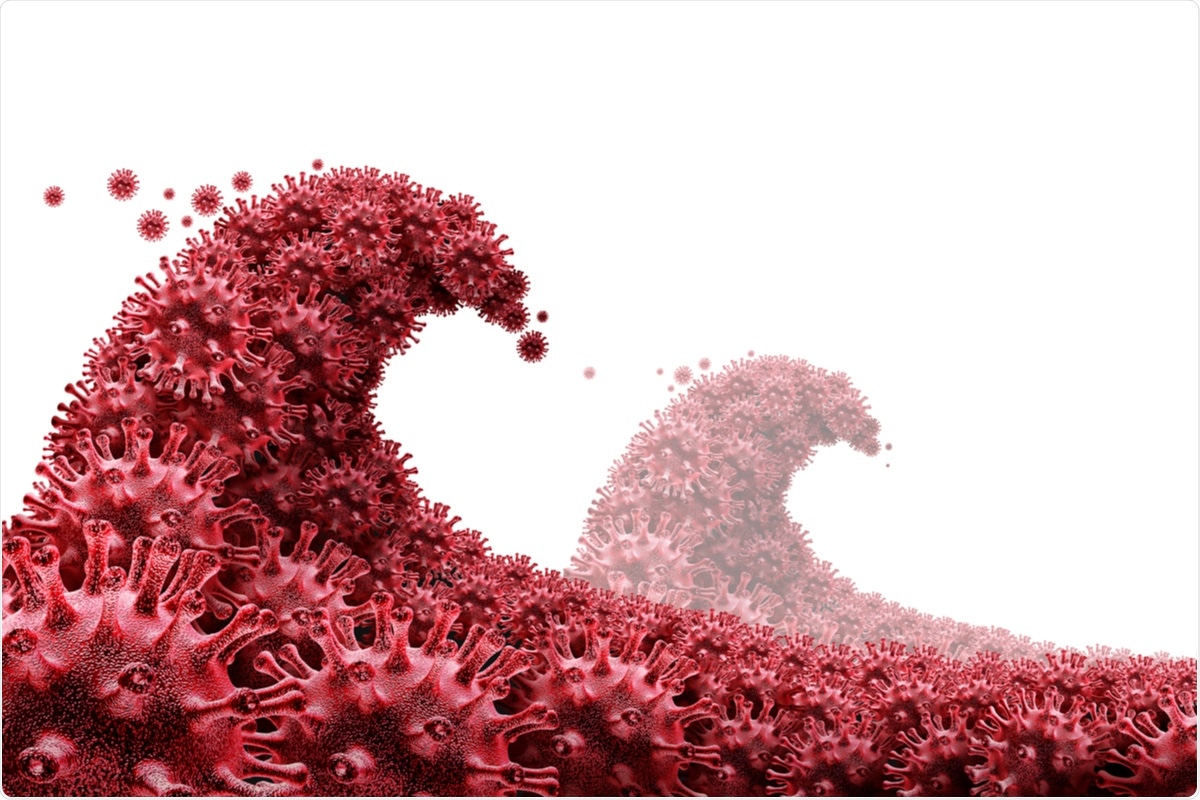Researchers combined daily case data and a sequential analysis using the critical slowing down model to predict coronavirus disease 2019 (COVID-19) waves almost two weeks before their onset.
The COVID-19 pandemic emerged suddenly, as is true for many natural systems, and left policymakers and governments to scramble to implement appropriate strategies to mitigate its effect. Several clinical, non-pharmaceutical (e.g., social distancing, lockdown, etc.), and recently vaccination strategies, have been implemented to combat the pandemic worldwide.

However, the right time to implement mitigation strategies is still unclear. Studies have suggested implementing non-pharmaceutical interventions about two weeks before they were actually implemented could have halved the number of deaths. Identifying this important window for putting strategies in place will help make more effective strategic decisions.

 This news article was a review of a preliminary scientific report that had not undergone peer-review at the time of publication. Since its initial publication, the scientific report has now been peer reviewed and accepted for publication in a Scientific Journal. Links to the preliminary and peer-reviewed reports are available in the Sources section at the bottom of this article. View Sources
This news article was a review of a preliminary scientific report that had not undergone peer-review at the time of publication. Since its initial publication, the scientific report has now been peer reviewed and accepted for publication in a Scientific Journal. Links to the preliminary and peer-reviewed reports are available in the Sources section at the bottom of this article. View Sources
The emergence of diseases often requires the use of context-specific models, which though powerful, are restricted by the availability of data and a mechanistic understanding of the system. An alternative is to look at disease emergence as critical transitions, where a pressure, like host movement or pathogen evolution, pushes the system to an edge. This allows the use of methods based on the idea of critical slowing down (CSD) to understand COVID-19 dynamics.
CSD represents the ability of a system to recover from a deviation as it approaches a threshold. Another small shift in the state triggers a feedback loop, and the system shifts. The ‘Early Warning Signal’ (EWS) statistics based on CSD will occur just before a quick increase in the number of cases during a disease outbreak and has been shown to predict the emergence of disease. Not only can EWS predict disease emergence but also disease re-emergence.
Predicting COVID-19 waves
Researchers from the University of Bristol, UK, tested this for COVID-19 to predict the multiple outbreaks by investigating the wave-like nature seen in most countries. The researchers collected COVID-19 data from January 2020 to June 2021 from the World Health Organization (WHO) database and the United Kingdom (UK) government data portal and analyzed daily positive cases. They defined waves in the cases and calculated EWS.
Models predicted two instances of cases increasing greatly in the UK, corresponding to the onset of the first and second waves in March and September 2020, respectively. Following the decrease in the two waves, the authors performed an EWS analysis on the data from 18 June 2020 and 1 April 2021.
They found that all EWS indicators increased at least once before the first and second waves, with these detected about two weeks before the onset of the waves. The majority of indicators suggest the potential for a coming third wave.
Similar results were seen for other countries, and successive waves were predicted. However, when the daily variation is high, and the time between the waves is short, EWS indicators became delayed and do not occur before the wave.
Thus, EWS is able to predict the emergence and re-emergence of COVID-19 waves, and can be a useful tool for policymakers when making policy decisions. “We therefore suggest that composite EWSs are detectable sufficiently prior to COVID-19 waves to be suitable in the current monitoring toolbox for this and potential future pandemics,” write the authors.
However, the quality of data available can often hamper the use of EWS. This study suggests using daily case data can be used in EWS to detect important changes in this data. Although countries report data differently, EWS detects the onset of waves consistently, though how much before onset it is able to predict varies.
The prediction of a wave about two weeks before indicates a system at risk, which requires intervention. The detection by EWS could then be used to identify the variables in the system that are changing.

 This news article was a review of a preliminary scientific report that had not undergone peer-review at the time of publication. Since its initial publication, the scientific report has now been peer reviewed and accepted for publication in a Scientific Journal. Links to the preliminary and peer-reviewed reports are available in the Sources section at the bottom of this article. View Sources
This news article was a review of a preliminary scientific report that had not undergone peer-review at the time of publication. Since its initial publication, the scientific report has now been peer reviewed and accepted for publication in a Scientific Journal. Links to the preliminary and peer-reviewed reports are available in the Sources section at the bottom of this article. View Sources
Article Revisions
- Apr 10 2023 - The preprint preliminary research paper that this article was based upon was accepted for publication in a peer-reviewed Scientific Journal. This article was edited accordingly to include a link to the final peer-reviewed paper, now shown in the sources section.